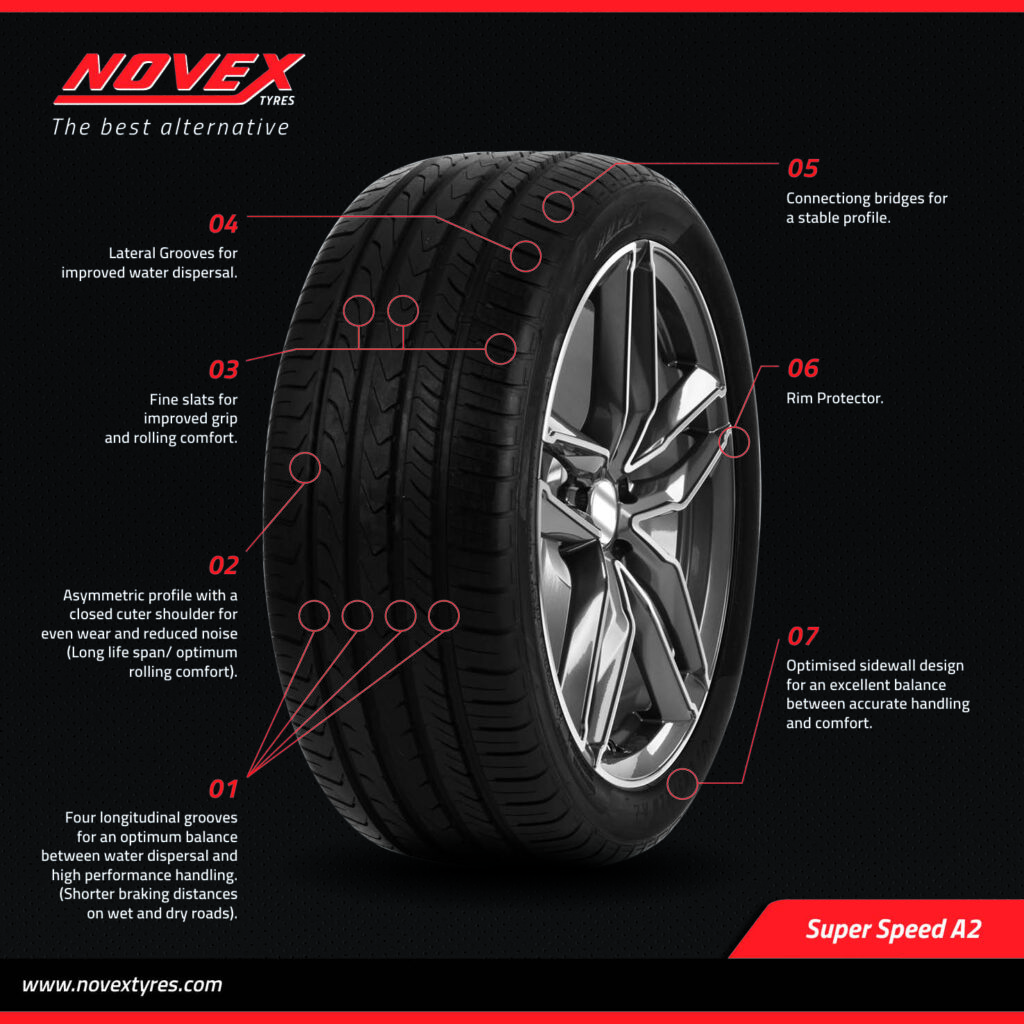Symbols on winter tyres
You can recognize winter tyres by their pattern, but also by the 3 Peak Mountain SnowFlakee (3PMSF) symbol. In 2010 the 3PMSF symbol (supported with official text) is officially recognized by the European Union. Winter tyres with snowflake symbol are also available for SUVs and 4×4-vehicles.
VACO-advice: tyres with 3PMSF symbol
VACO advices drivers to purchase winter tyres that are provided with a snowflake symbol. Tyres with the 3PMSF symbol meet requirements for grip on snow in practical tests of the European Union for grip on snow and these tyres have more traction on snowy surfaces and on slippery roads than tyres without this symbol.

Tyre pressure
Rubber is porous. Therefore, tyres are never completely air and gas tight: a tyre loses approximately 0.1 bar of pressure per month. If you drive with tyres under the correct pressure this distorts the tyre and therefore causes increased rolling resistance. Consider the pressure in bicycle tyres. Anyone riding on soft tyres must pedal much harder in order to move forward. This extra generation of heat can overheat the tyres, increasing the risk of a blowout.
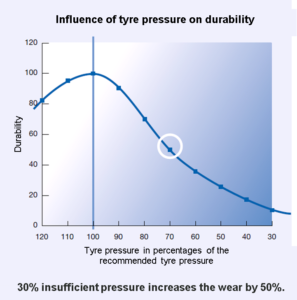
Insufficient tyre pressure also results in increased tyre wear. The diagram shows 30% insufficient pressure increases the wear by no less than 50%. So an extra check cannot do any harm. Ask your VACO tyre specialist for advice.
What is the correct tyre pressure?
The required tyre pressure depends on the tyre size. This is usually stated on the door post of the driver’s door, the inside of the fuel tank cap or on the tyre pressure tables at filling stations.
Tip:
Check your tyres when they are COLD. When you have driven for some time the tyres become warm and the pressure increases. So check your tyres before you drive or first allow them to cool off for 15 minutes. And remember the reserve tyres.
Tyre Pressure Measurement System (TPMS)
There are currently measuring systems available that constantly monitor your tyre pressure. This is called Tyre Pressure Measurement System or TPMS. These TPMS are available separately and can be built into the tyres or onto the valve of your caravan subsequently. This system warns you when the tyre pressure drops below the recommended pressure, thereby informing you when the tyre pressure is too low and that you must return them to the correct pressure. Go to your VACO tyre specialist for professional advice.
Source: VACO

The European legislation on winter tyres and snow chains is constantly changing. The rules vary from country to country, and even the date of manufacture of tyres can play an important role. Branch association VACO keeps a close eye on the regulations and has mapped out the current obligations in an overview.
You can download here the latest survey of the VACO Dutch Industry Association:
Legislation on winter tyre and snow chains by VACO
This survey consists of the following parts:
- Focused information about the winter tyre legislation in Germany, France, Italy, Austria and Switzerland;
- Legislation winter tyres Europe for pcr, van and light commercial vans (≤ 3.500 kg);
- Legislation winter tyres Europe for vans (> 3.500 kg;
- Legislation snow chains Europe for pcr, vans, commercial vans (≤ 3.500 kg);
- Legislation snow chains Europe for vans.
Source: VACO Dutch Branch Association

Load Index (LI) en Speed Index (SI)
LI: means Load Index and indicates the maximum load in kilogram per tyre.
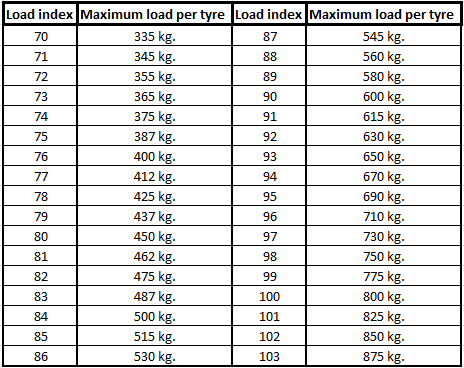
SI: means Speed Index and indicates the maximum speed (km/h) a tyre with this symbol can be driven.
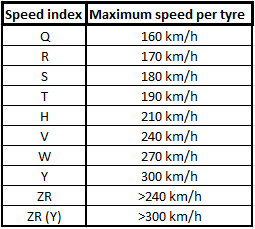
Tyre information
Below you will find the explanation of all the information shown on a tyre.
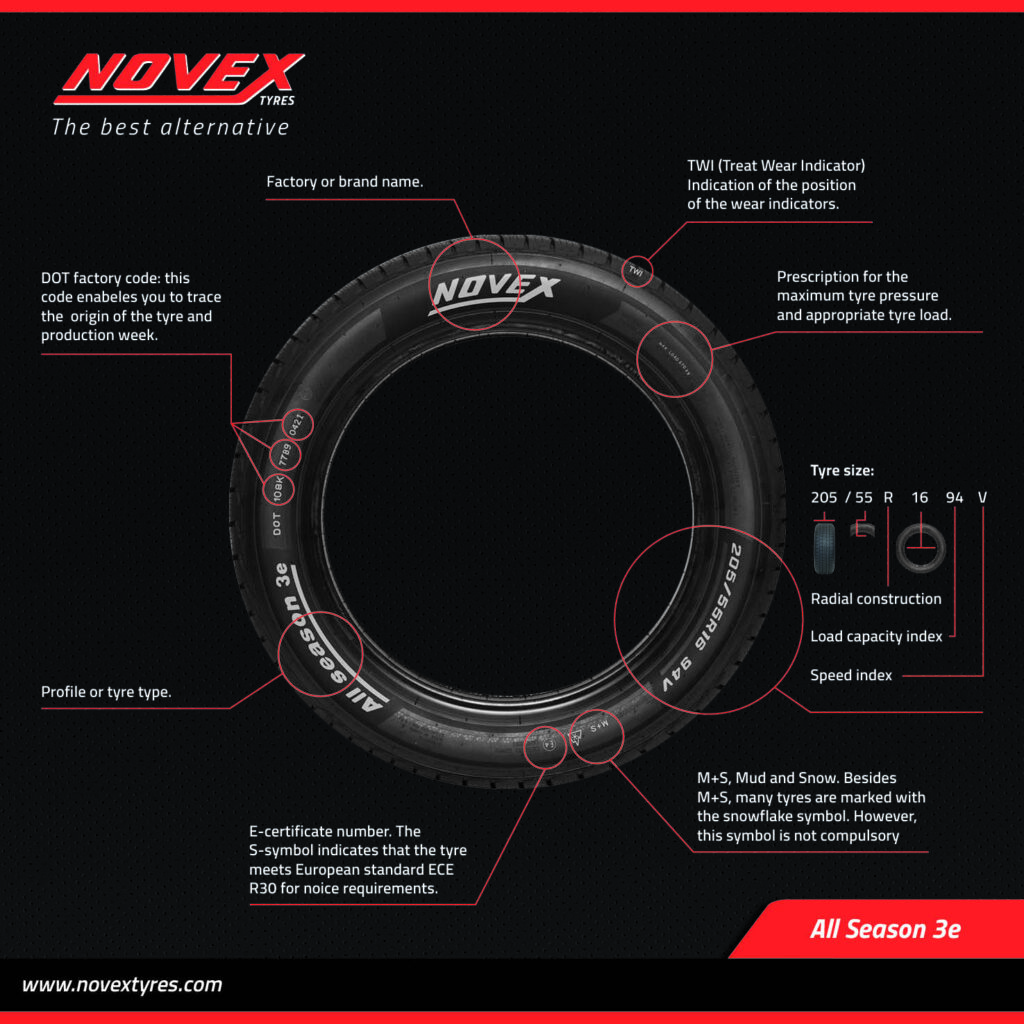
Aligning & balancing
The terms aligning the car and balancing the wheels of your car are often confused with each other; what are the differences?
Aligning your car:
When aligning your car, it is not the wheels and tyres which are aligned, buth whether the suspension is correctly adjusted for the front wheels. There are adjustment points in the suspension so with special equipment the correct wheel angle positioning (different for each car) can be made. This positioning is adjusted from different directions. Each of these directions have a name. These adjustments are called camber, caster and toe. Together, these adjustments ensure the wheels are suspended correctly under the car. Cars are aligned if, for instance, the tyres wear incorrectly, or after a collision parts of the suspension have become damaged or been replaced.
Balancing the wheels:
Balancing the wheels is simply to balance the wheel and tyre, and is done after fitting new tyres. Balancing is done on a device which rotates the wheel at high speed so any imbalance can be seen. This is removed by placing zinc or lead tyre weights on the wheel rim so the wheel and tyre remain in balance at every revolutions per minute (RPM). The hub of the car, to which the wheel is fitted, is already balanced in the factory, so it is not really necessary to balance the wheel on the car. Balancing on the car itself is only done if there is resonance (vibration) while driving at a certain RPM.
An all-season tyre is a summer tyre, which also has characteristics of a winter tyre. An all-season tyre offers excellent grip on dry and wet roads and at temperatures above and below the 7°C.
The all season tyre is suitable for:
- Those who do not drive more than 10.000 km per year
- Those who do not want to change their tyres twice a year
Novex All Season & All Season LT
Besides summer tyres Novex also offers a complete all-season range for passenger cars and light trucks. These patterns, named All Season 3E and for light trucks we expect the All Season LT3 in the near future. These tyres are designed for driving all year round in all weather conditions. We have in total 50 all season sizes available, ranging from 13 up to 19 inch.
Novex’ all season tyres are marked with the ‘Three Peak Mountain Snowflake symbol’ which means that they are officially recognized as winter tyres (also in Germany).
The term ‘summer tyres’ was invented in order to make a clear difference between summer and winter tyres. Summer tyres can be seen as ‘regular’ tyres. Our Novex summer tyres are available in five different patterns and thanks to the special rubber compound of the tyres, they offer excellent grip. The extensive summer range consists of more than 80 sizes. The tyres also have a very competitive price-quality ratio.
